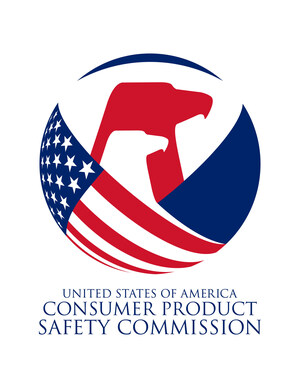WASHINGTON, June 22, 2011 /PRNewswire-USNewswire/ -- Sparklers, bottle rockets and small firecrackers may appear harmless due to their size, however, new data released today by the U.S. Consumer Product Safety Commission (CPSC) shows that last year, during the 30 days surrounding July 4, these fireworks sent about 1,900 injured consumers to emergency rooms. CPSC's statistics show that in 2010 about 8,600 consumers ended up in hospital emergency rooms due to injuries involving legal and illegal fireworks.
(Logo: http://photos.prnewswire.com/prnh/20030904/USCSCLOGO)
CPSC's annual death and injury report on fireworks also indicates that approximately 40 percent of estimated injuries occurred to children younger than 15 years of age. In addition, CPSC received reports of three fatalities related to fireworks.
"From purchase to ignition, know how you and your family can stay safe and which fireworks are allowed in your state if fireworks are part of your July 4th celebration," said CPSC Chairman Inez Tenenbaum. "Never assume that a fireworks device is safe based on its size and never allow young children to play with or light fireworks. By knowing the dangers of all types of fireworks, consumers can prevent tragedies."
Today on the National Mall, CPSC hosted its annual fireworks safety press conference highlighting – through live demonstrations - the dangers associated with legal and illegal fireworks.
Chairman Tenenbaum announced that during the 30 days surrounding last year's Independence Day holiday, there were about 6,300 reports of injuries involving fireworks. Burns and lacerations to the hands, face and head were the most frequently reported injuries. About 40 percent of the injuries that occurred during this time period were related to firecrackers, bottle rockets, and sparklers.
The federal government is committed to stopping the manufacture and sale of illegal fireworks. CPSC established permanent staffing at the Import Safety Commercial Targeting and Analysis Center (CTAC) in Washington, D.C., and the agency is working in cooperation with U.S. Customs and Border Protection (CBP) to implement new enforcement measures.
In 2010, CPSC staff began implementing new procedures for identifying and selecting fireworks at the ports for examination and sampling. With assistance from CBP, staff from the CPSC sampled and tested many shipments of fireworks to see if they were in compliance with the Federal Hazardous Substance Act (FHSA). Of the shipments targeted by CPSC staff about 43 percent contained noncompliant fireworks. CPSC is working closely with our federal partners to enforce fireworks regulations, prosecute manufacturers and distributors of illegal fireworks, and educate the public about the risks associated with such fireworks.
Early this month, CPSC staff sent a letter to the industry regarding "adult snapper" devices, recently offered for sale. The letter provides the staff's clarification of labeling and pyrotechnic composition limits for these devices. The letter advised that the staff considers adult snappers, although fuseless, to be the equivalent of more powerful firecrackers.
The CPSC and the General Administration for Quality Supervision and Inspection and Quarantine (AQSIQ) of the Government of the People's Republic of China have targeted fireworks among four product areas for exchange of information on standards, greater inspection of high-risk products, and tighter quality controls on components from parts suppliers.
Consumers who decide to purchase legal fireworks are urged to take these safety steps:
- Never allow young children to play with or ignite fireworks.
- Avoid buying fireworks that are packaged in brown paper because this is often a sign that the fireworks were made for professional displays and that they could pose a danger to consumers.
- Always have an adult supervise fireworks activities. Parents don't realize that young children suffer injuries from sparklers. Sparklers burn at temperatures of about 2,000 degrees - hot enough to melt some metals.
- Never place any part of your body directly over a fireworks device when lighting the fuse. Back up to a safe distance immediately after lighting fireworks.
- Never try to re-light or pick up fireworks that have not ignited fully.
- Never point or throw fireworks at another person.
- Keep a bucket of water or a garden hose handy in case of fire or other mishap.
- Light fireworks one at a time, then move back quickly.
- Never carry fireworks in a pocket or shoot them off in metal or glass containers.
- After fireworks complete their burning, douse the spent device with plenty of water from a bucket or hose before discarding it to prevent a trash fire.
- Make sure fireworks are legal in your area before buying or using them.
CPSC Recall Hotline: (800) 638-2772
CPSC Media Contact: (301) 504-7908
SOURCE U.S. Consumer Product Safety Commission
WANT YOUR COMPANY'S NEWS FEATURED ON PRNEWSWIRE.COM?
Newsrooms &
Influencers
Digital Media
Outlets
Journalists
Opted In





Share this article